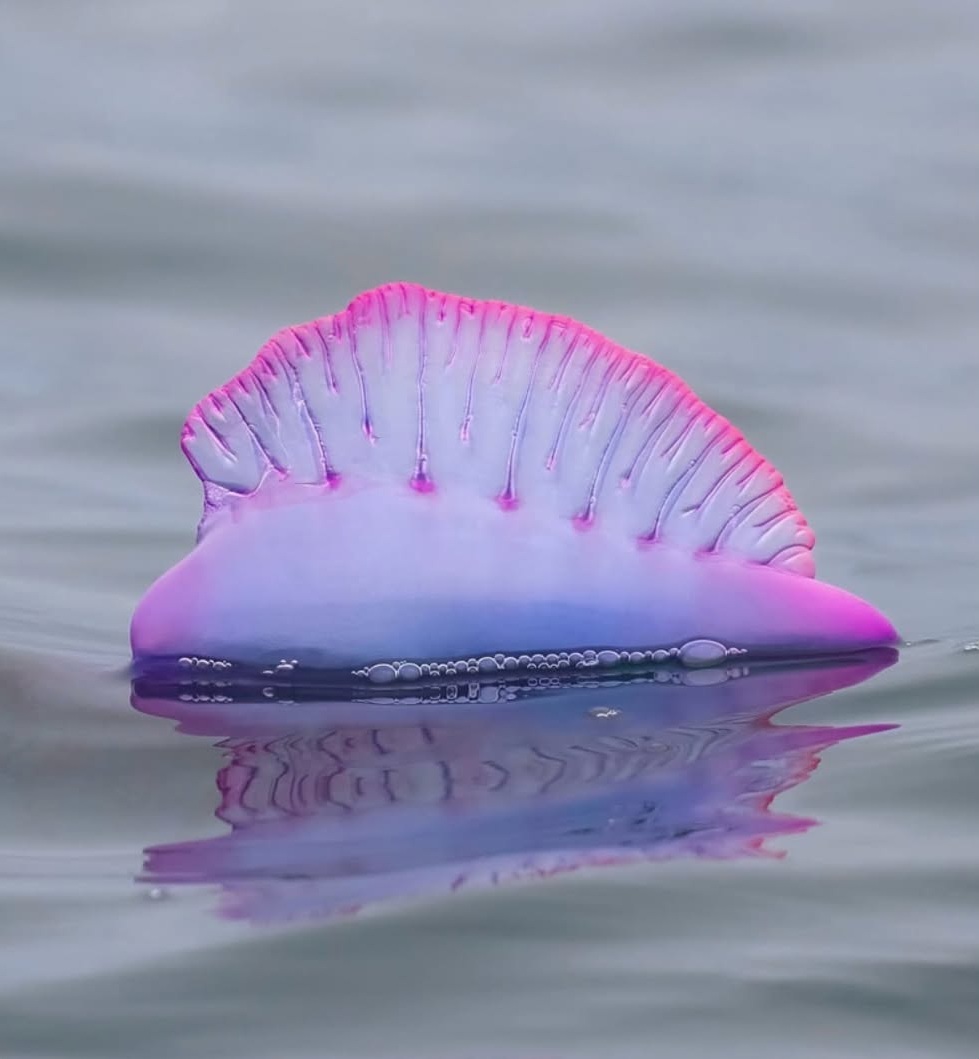The Portuguese Man-of-War is one of the ocean’s most captivating yet perilous creatures. Often mistaken for a jellyfish due to its appearance, this remarkable organism is actually a siphonophore—a colony of specialized organisms working together as one entity. While it might look graceful floating through the water, its beauty hides a deadly secret.
Not a Jellyfish, But a Living Colony
At first glance, the Man-of-War appears to be a single creature, thanks to its balloon-like float, called a pneumatophore. This gas-filled structure acts as a sail, allowing the colony to drift across the ocean’s surface with the wind. Beneath this float, however, extends a dangerous array of tentacles—each with a different function, contributing to the survival of the colony.
Tentacles of Terror: A Deadly Weapon
The tentacles of the Portuguese Man-of-War can stretch over 30 feet (9 meters), making them incredibly formidable. These tentacles are lined with nematocysts—microscopic venomous cells that deliver a powerful sting capable of paralyzing small fish in an instant. While the sting is not usually deadly to humans, contact can result in excruciating pain, welts, and, in rare cases, severe allergic reactions.
Even if a Man-of-War washes ashore and dies, its tentacles remain dangerously active. This means that beached specimens still pose a threat to unsuspecting beachgoers who may come into contact with them.
An Important Role in the Ecosystem
Despite its terrifying appearance, the Portuguese Man-of-War plays a vital role in the marine ecosystem. Its predatory nature helps regulate populations of small fish and plankton, keeping the balance of marine life intact. Additionally, it serves as an important food source for specialized predators, such as loggerhead sea turtles and ocean sunfish, which are immune to its sting.
The Man-of-War also provides shelter for juvenile fish, which hide among its tentacles to avoid predators. This symbiotic relationship benefits both the fish and the Man-of-War, as the fish receive protection, and the colony may gain smaller prey as they seek refuge.
A Beautiful but Dangerous Drifter
With its vibrant blue and purple hues, the Portuguese Man-of-War is undeniably beautiful, drawing the attention of anyone who sees it. However, it’s essential to appreciate this mesmerizing creature from a safe distance. It serves as a reminder that the ocean is full of both beauty and danger, where even delicate-looking organisms can be surprisingly hazardous.
While the Portuguese Man-of-War is a marvel of nature, it is also a potent reminder of the unpredictable power of the sea. Always exercise caution when encountering this fascinating creature in the wild, as its sting is not something you want to experience firsthand.


